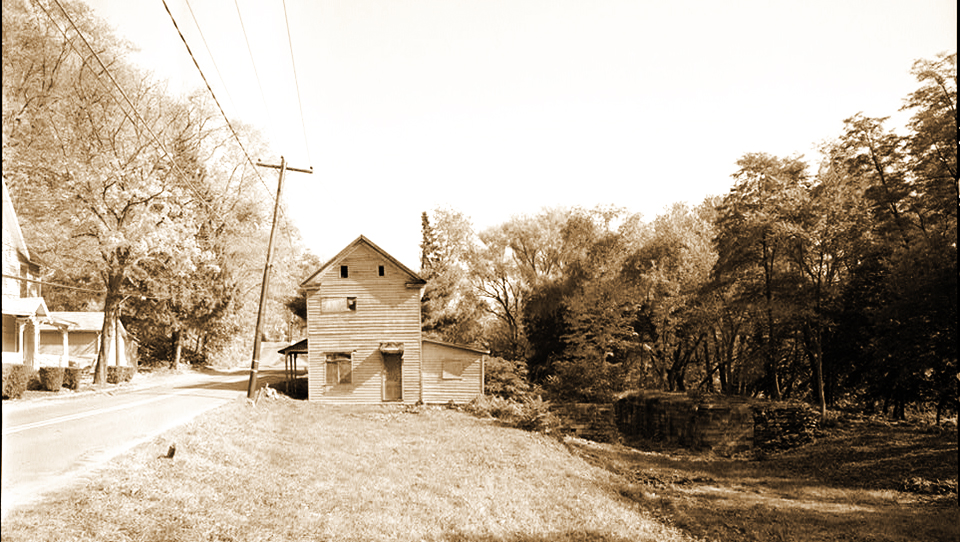Site Index | New/Updated | Search | Contact
The Great Pennsylvania Canal

General View East, along Route 66,Lock Keepers House and Lock, West Branch Pennsylvania Canal, South of State Route 664 along North bank of West Branch of Susquehanna River, 2,000 feet East of Jay Street Bridge, Lock Haven, Clinton County, PA, Historic American Buildings Survey, Library of Congress, www,loc.gov, accessed November, 2022.
See also:
Charles Dickens, who traveled by [packet boat] on the Pennsylvania Canal in 1842, has left us this charming picture of the experience: "The exquisite beauty of the opening day, when light came gleaming off from everything; the lazy motion of the boat, when one lay idly on the deck, looking through, rather than at, the deep blue sky; the gliding on at night, so noiselessly, past frowning hills, sullen with dark trees, and sometimes angry in one red burning spot high up where unseen men lay crouching round a fire; the shining out of the bright stars, undisturbed by noise of wheels or steam or any sound than the liquid rippling of the water as the boat went on — all these were pure delights."
The Great Pennsylvania Canal [1]
The Erie Canal insured to New York the bulk of the western trade, unless something could be done to lower the cost of carrying goods between Pittsburgh and the East. Realizing this fact, the people of Pennsylvania in 1826 entered upon the most extensive scheme of public improvement that they have ever undertaken. They determined to build a great highway of commerce from Philadelphia to Pittsburgh. After a careful survey it was decided to build a railroad to Columbia. A canal was to extend from Columbia up the Susquehanna river to the mouth of the Juniata, and thence up that stream to Hollidaysburg. From this point a Portage Railroad, thirty-six miles long, was to cross the Allegheny Mountains to Johnstown. From here a canal was to follow the Conemaugh, Kiskiminetas, and Allegheny rivers to Pittsburgh.
On July 4, 1826, ground was broken at Harrisburg, and eight years later the great thoroughfare of canal and railroad was open to traffic from the Delaware to the Ohio. The Portage Railroad was constructed with five planes on each side of the mountains. At the head of each slope there was a stationary engine, which drew up or let down cars by an endless wire rope. There was a similar arrangement on a steep grade near Philadelphia and another at Columbia. A great feeder of the Pennsylvania Canal ascended the Susquehanna River and its west branch to Williamsport and Lock Haven, and another division followed the north branch from Northumberland to the New York State line. For many years this great state system of canals was an important factor in the commercial life of the commonwealth. In 1857 the main line of the Pennsylvania Canal was bought by the Pennsylvania Railroad Company, and sooner or later all the other canals owned by the state were sold. The main canal was soon abandoned by the railroad and all the branches have now fallen into disuse.
The state constructed the Pennsylvania system of canals and connecting railroads, but the shippers had to furnish their own cars, boats, and motive power. Many transportation companies arose to take charge of this business. At first the cars were drawn by horses or locomotives on the same line of track, but so much trouble arose because the horse cars delayed the steam trains that the use of horses was forbidden. The canal boats were drawn by horses and mules. Freight rates were lower than by wagon, but still much higher than they are since the railroad has displaced the canal. In 1837 it cost $2.35 per hundred pounds to send merchandise like dry goods or shoes from Philadelphia to Pittsburgh. By 1849 the rate on these articles had fallen to 90 cents.
There was much passenger travel as well as freight service on the canals. Boats used exclusively for carrying passengers were called packet boats. Charles Dickens, who traveled by one of these packets on the Pennsylvania Canal in 1842, has left us this charming picture of the experience: "The exquisite beauty of the opening day, when light came gleaming off from everything; the lazy motion of the boat, when one lay idly on the deck, looking through, rather than at, the deep blue sky; the gliding on at night, so noiselessly, past frowning hills, sullen with dark trees, and sometimes angry in one red burning spot high up where unseen men lay crouching round a fire; the shining out of the bright stars, undisturbed by noise of wheels or steam or any sound than the liquid rippling of the water as the boat went on — all these were pure delights."
- Burnham, Smith, A Short History of Pennsylvania, 1912, Hinds, Noble & Eddredge, New York/Philadelphia